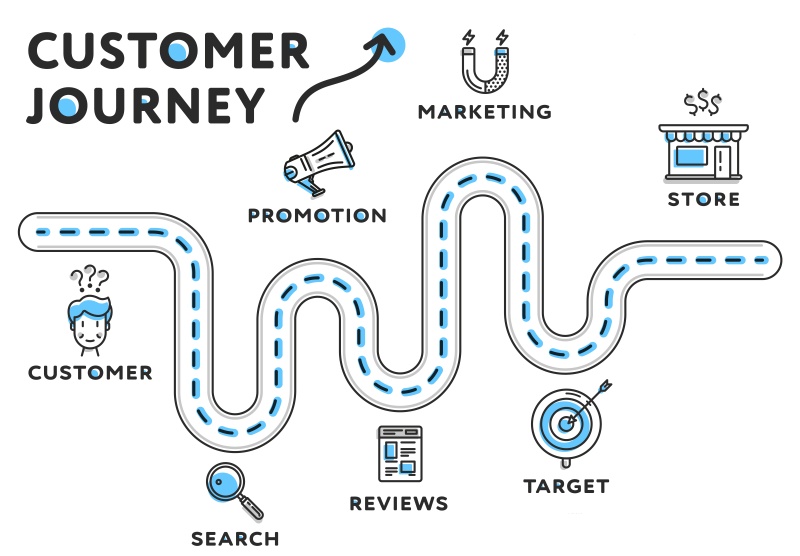As we said in the first part of this article, a good marketing plan can help stay on course. In this second part we will analyse the description of target clients, the choice of objectives and the calculation of the necessary budget.

A company should know well the clients it has decided to serve. A first step in getting to know them in depth consists in the analysis of the last 20-30 major contracts.
Even if the company does not keep systematic data records, the memory of them is still fresh and it is easy to fill in the gaps. In this way it is possible to draft an ‘identity card’ of the client, intended as a group, served by the company, with data such as profession, income, needs and desiderata, supplier selection criteria, etc..
Especially when choosing strategy, it is important to carefully define who the potential clients are. Questions such as:
- What is the process that leads to the decision to purchase?
- What is the client’s degree of engagement?
- What are the defining reasons for the decision to purchase?
- Which attributes do (company) clients seek in doors and windows?
- What are the clients’ expectations and needs?
- To which marketing variables are they more sensitive: price, communication, service, brand image, manufacturer reliability?
- Which are the main reasons for satisfaction or dissatisfaction?
require specific answers for each group of current or potential clients (individuals, dealers, contractors).
Choice of objectives and of strategies

Based on the information collected and on the analyses performed, the company is in the position of choosing a development strategy and to translate it into an action plan.
Before this can be done, however, it is necessary to set the objectives that the company aims at achieving, in terms of sales volumes and of marketing, because the strategy depends directly on them, and even common sense dictates that different objectives require different strategies.
Objectives are a critical element for success. A desire is an objective that has not been written yet. If a company does not clearly set out its objectives, this means that it is still not desiring success. When deciding what the objectives are, the formula known as SMART indicating the goals the company should aim for must be applied: a) Specific, b) Measurable, c) Achievable, d) Realistic (or Relevant) and e) Time-bound.
The objectives regard sales volumes and marketing. The salesforecasts (intended as objectives) can be developed in various ways. It is best to start with a quick calculation and later add on details and improvements. In function of the company’s organization and size, total sales must be subdivided by geographical area, product, dealer and client type, without forgetting monthly breakdown. Forecasts by month and by product make production planning easier.
As for the marketing objectives, these can include the company’s notoriety, presenting the company as a reliable and qualified supplier, its accreditation at architectural firms, etc..

Once the objectives have been defined, the focus should shift to the company’s strategy that must result, as much as possible, in the company gaining an actual competitive edge capable of sustaining the successful achievement of the objectives it has set itself.
The strategy must also work towards integrating the objectives and often falls into one of the following four categories: defence, penetration, development via markets or expansion of product range.
The strategy, that must be shared by everyone within the company – and especially by those who come into direct contact with clients – must be developed on three levels:
- actual strategy, linked to the chosen marketing mix (product, price, promotion, services, etc.);
- tactics, indicating the messages, communication tools, etc.;
- programs: services, advertising, fairs, etc..
An aspect that strategy must never overlook answers the question: “How can I attract more clients?”.
The communications budget

Communication planning must be done contemporarily with the setting of the sales objectives because they are also a function of the quantity and quality of communication the company develops.
To define the communication strategy means to:
- identify the company’s various target audiences (individuals, contractors, dealers, designers) the communication effort must address;
- choose the key topics of communication;
- select the communication means (website, newsletter, social media, sector magazines, dailies, radio-tv, billboards, posters, mobile advertising, mailing, etc.) and establish the communication implementation schedule.
A plan must always have a timetable showing each one of the actions planned by the relevant persons in charge.This table is the plan’s roadmap and sets it into the daily routine of the company in practical, concrete terms, with deadlines and employee accountability. This table is very helpful when the plan is finally implemented.

Conclusions
The plan has three functions -communication, managementand planning – that must be kept together in order to make it a veritable roadmap that can be adjusted in the event of new situations or contingent issues.
Most importantly, the plan must not be set aside and forgotten, because then all the energy spent in making it will be for nothing and no good will come of it.
Finally, one should remember that: “Every marketing plan is wrong”. This might seem a paradox, but it does contain a modicum of truth because plans are made for the future, and no one can predict the future.
Reality often turns the tables and the company therefore must monitor the differences between what has been planned and the results being achieved, so as to understand why and where the mistake is and what needs to be changed to get back on course.





